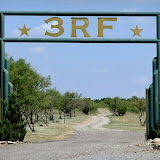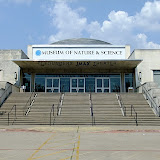 |
| Griffith Observatory |
There is a lot of good stuff here, and certainly more than you may expect from first looking. A Tesla Coil is fired every hour, along with a talk given by a member of staff, a public programme of events also runs, and our group was able to see an interactive presentation of how to make a comet (using water, sand, windex and dry ice). The presentation style was informal and interesting, with science questions being answered whilst guests entered.
There were once again good links to local astronomers and reasons why California should be well known in astronomical circles, as well as a live view of the sun on a smoky glass screen in one area. This was a very nice touch, as was the effect of looking at Saturn through a telescope in the same hall. The planets themselves got excellent treatment in the downstairs area, being displayed in very intuitive ways as regards size, scale and orientation.
My favourite piece in the observatory though had to be the Gottlieb Transit corridor which, at local noon, focuses the sun onto a large arc of metal to show the date and correspond to the place on the ecliptic. Sadly this wasn't well explained at all, but as someone who knows what was going on I really appreciated it.
It would be worth going again when it's not so busy, so I shall hopefully have reason to visit LA again in order to see more, but for anyone wanting to find out more about the universe this is a good place to go in Hollywood. There are hiking trails for those needing a walk as well.





